Attack Surface Validation
Enhance security visibility across your attack surface and uncover hidden risks.
.webp?width=700&height=450&name=Visuals02%20(1).webp)
Security Visibility Across Your Attack Surface. Uncover Hidden Risks.
In order to secure your organization against the latest cyber threats, it’s imperative to have a clear and up-to-date view of the internal and external assets you need to protect.
Picus Attack Surface Validation (ASV) provides a way to shift from asset inventory to risk-based visualization and prioritization of assets and vulnerabilities for effective threat exposure management across environments.
Overcome the Challenges of Cyber Asset and Attack Surface Management
Relying on single, disparate sources of information to build a complete picture of your organization’s IT asset inventory can be dangerous. Due to the complexity of today’s environments, pace of digital transformation and shadow IT, assets inside your networks can easily go unaccounted for and be inadvertently exposed to attackers.
By aggregating and normalizing asset data from a diverse range of sources and then presenting it via a single pane of glass for analysis, ASV supplies the insights you need to manage cyber risks more effectively.
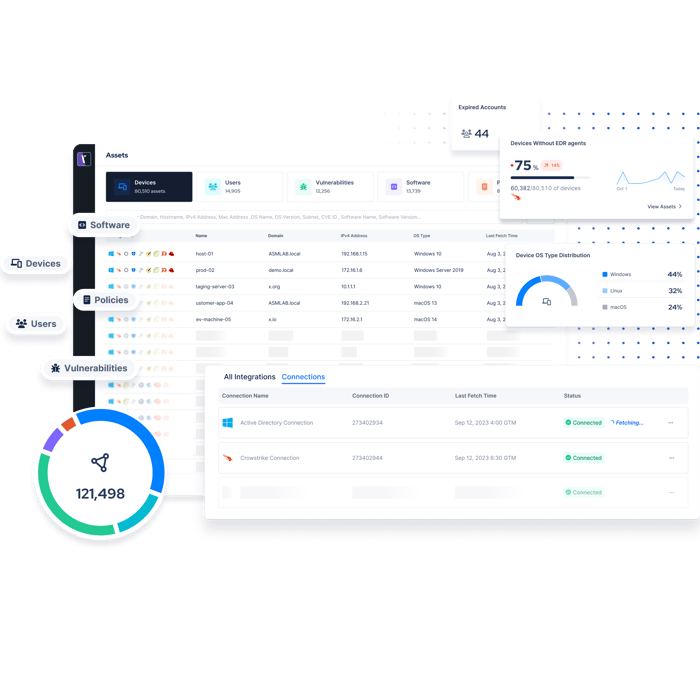
Why Picus Attack Surface Validation
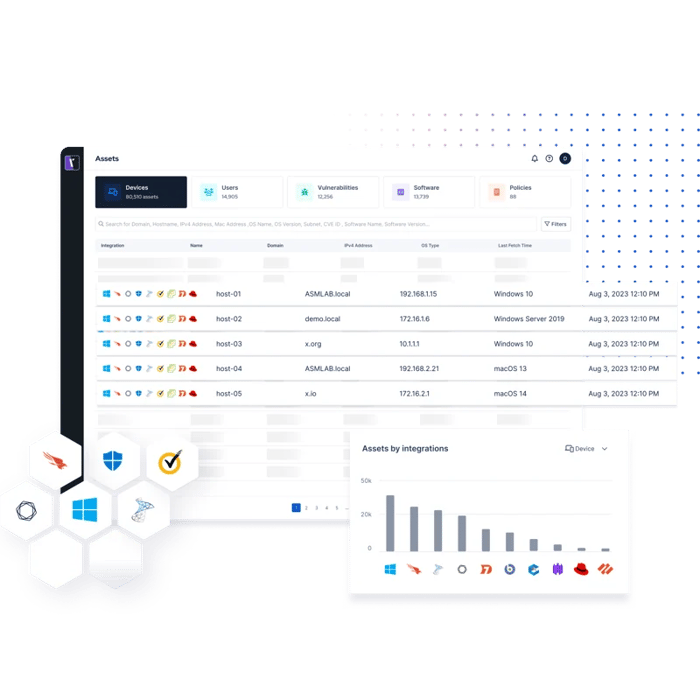
Integrations for Complete Visibility Across Your Attack Surface
To provide the broad and deep visibility you need to manage and protect your assets, Picus Attack Surface Validation integrates with a wide range of data sources, including:
- Microsoft Active Directory
- Endpoint Protection Platforms (EPP)
- Vulnerability Management Solutions
- Endpoint & Config Management Systems
- External Attack Surface Management Tools
Simulate Attacks for Even Richer Insights
Leverage the Picus Security Validation Platform’s Breach and Attack Simulation capabilities to benefit from even greater insights to help manage your organization’s assets and reduce its threat exposure.
Run real-world threat simulations to understand the efficacy of your security controls to protect critical assets and use this supporting data to help determine which vulnerabilities and assets to patch first.
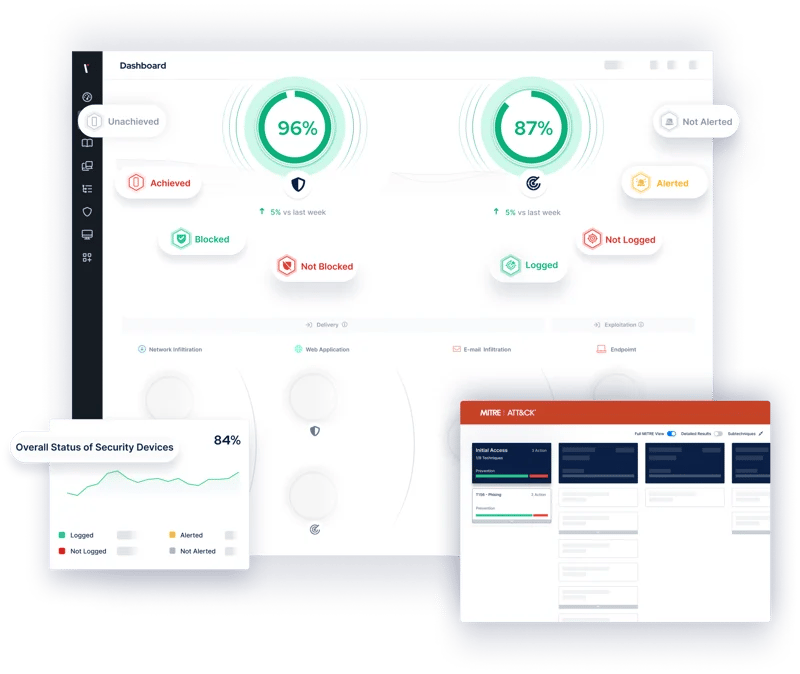
USE CASES
Address Challenges with Security Validation
See and prioritize exposures across your security operations.
Attack
Simulation
Simulate attacks to measure and optimize security controls.
Testing
Stay on top of exposures while alleviating manual testing requirements.
Validation
Improve decision making with a holistic view of your security posture.
Awarded By The Industry
Customer's Choice
2024 Gartner® Peer Insights™ Voice of the Customer for Breach and Attack Simulation
Cyber Security Excellence Awards
2024 Cybersecurity Excellence Awards – Most Innovative Cybersecurity Company
Customer Reviews
Picus is very good attack simulation tool in overall. It shows all security vulnerabilities and guides..
Sr. Information Security & Risk Officer
The implementation was very fast, the platform is easy to integrate and results quite intuitive to be analyzed.
CIO
It is easy to use and implement the product. It is a really useful tool to find out your security tool vulnerabilities..
Cyber Security Manage
A very successful platform where we can test the accuracy of our security investments and see their scores.
Manager, IT Security and Risk Management
Picus is one of the best BAS solution on the market today. The threat database it is constantly updated..
ICT Security Engineer
Picus completes the task it is required to do near perfect as a BAS solution. Threat database is up to date & updated frequently after a new malware or campaign, also the database is large..
Consultant Security Engineer
There is a very nice team from which I can get quick support. The application provides us with great convenience and confidence in our work.
Information Security Specialist
To test our systems with the real-time attack product is helping us to improve our security maturity. At the same time, the real time attacks are updating with the zero-day vulnerabilities..
Senior Vulnerability Management Engineer
With the help of this product we can perform continuosly endpoint attack via latest tactics and techniques which are used by threat actors..
Manager, IT Security and Risk Management
.. It is possible to customise the campaign or schedule the assessment periodically, to test protection measure implemented on network, endpoint and email.
ICT Security Engineer
Picus is such a great product for organizations that are looking to have constant checks and validation on their security posture in the organization.
Cybersecuirty Pre-sales Engineer.
Picus is a real safety measurement tool. Ever since we took Picus into our inventory, Security has helped significantly to increase our maturity level.
Cyber Defense Senior Specialist
It strengthened our security perspective and allowed us to follow trend attacks. We can test zeroday malicious threats very early because Picus could add them their attack database quickly.
Security Specialist
Validate Effectiveness Across Your Security Program
Validation
Enhance visibility of internal and external cyber assets and the security risks they pose.
Validation
Identify cloud misconfigurations and overly permissive identity and access management policies.
Validation
Measure and optimize the effectiveness of security controls with consistent and accurate attack simulations.
Validation
Eliminate high-risk attack paths that attackers could exploit to compromise users and assets.
Validation
RESOURCES
Latest Attack Surface Validation Resources


.png?width=353&height=200&name=vulnerability-vs-exposure-blog-preview%20(1).png)



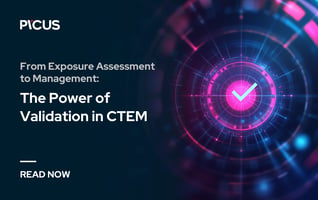
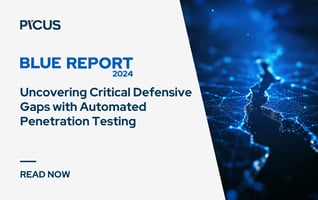

.png?width=3200&height=323&name=Pattern(1).png)
See the
Picus Security Validation Platform
Request a Demo
Submit a request and we'll share answers to your top security validation and exposure management questions.
Get Threat-ready
Simulate real-world cyber threats in minutes and see a holistic view of your security effectiveness.
Frequently Asked Questions
The term ‘attack surface’ is typically used to describe the number of ‘points’ on the boundary of a system and/or environment that attackers could exploit to breach or impact an organization. Such points could include internet-facing assets such as websites, applications, cloud workloads, and source code fragments. An organization’s ‘internal attack surface’ describes assets such as users, hosts, systems and applications that exist inside networks.
Attack surface management describes the continuous process of discovering, classifying and assessing the security of all of an organization's internal and external assets
Attack surface management is essential in security operations because, in order to protect organizations effectively, security teams must have a clear understanding of the assets they must defend. Continuous IT and security changes mean an organization’s attack surface changes daily and it is imperative that security teams keep pace to respond to risks quickly.
Internal and external attack surface management helps IT and security teams maintain visibility of the assets they must defend and ensures they can make data-driven decisions to prioritize their protection and manage risks effectively.
Picus Attack Surface Validation is a Cyber Asset Attack Surface Management (CAASM) tool that integrates with a wide range of data sources to provide internal and external asset visibility.
To support external asset management, Picus ASV can integrate with External Attack Surface Management (EASM) tools.
Yes. To meet the highest data protection and operational security standards, the Picus Platform is SOC 2 Type 2 compliant. Request a copy of our report here.

